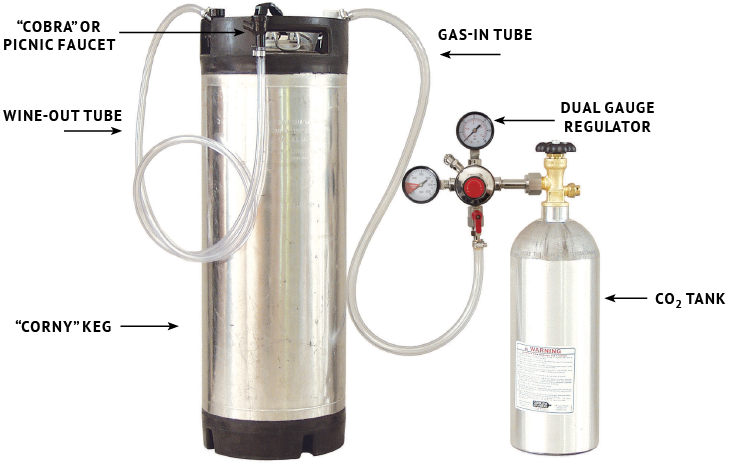Excluding oxygen by gassing headspaces and purging containers is one of the most important winemaking jobs we have. Oxygen exposure during aging can create all sorts of problems from premature oxidation and loss of aroma to spoilage microbe growth. The tough part is just what you mention — how do we know, with our own unique bottles, carboys, kegs, and barrels (not to mention the PSI and size of our gassing setup) that a barrel or carboy is “gassed” enough for the job? Sadly, there is no easy answer because as I’ve intimated there are so many unique factors involved. I can, however, provide a solid set of guidelines to help you make the best decisions for any situation you may encounter while racking.

We “gas the headspace” using inert gases heavier than air, typically argon and carbon dioxide gas. Nitrogen is sometimes used in the commercial winemaking process to push hose lines, etc., but since nitrogen has about the same gas density as air (nitrogen has 1.25 g/L to air’s 1.29 g/L) it’s not terribly practical for blanketing headspace. Carbon dioxide is indeed heavier than air (1.98 g/L) while argon clocks in at 1.78 g/L, making them both great candidates for this kind of work. Carbon dioxide, especially under cold conditions, however, will readily dissolve into wine so argon is the best gas to use as a wine approaches bottling (unless you want a little extra fizz).
Like I said, there’s no way to fully exclude oxygen from headspace as there will always be a little mixing. Think of it as if you’d be pouring heavy cream into coffee or making one of those fancy layered cocktails with different colors. Your aim is to layer the heavier gas on top of the wine’s surface with as little turbulence as possible, in order to avoid mixing the argon or carbon dioxide in with the lighter air above.
Here are some blanketing tips:
- Introduce gas very slowly. Start regulator at 0 psi and just crack open to a very low pressure setting.
- You want the gas to be exiting at a low rate so as not to cause a big mixture of your gas and the air in the headspace.
- Meter in the gas parallel to the wine surface, not directly down onto it. If you blow your gas directly down onto the surface of the wine, it’ll just rebound up, creating a jet-wash effect. You can avoid this by fitting a “T” onto the end of your hose or pipe, so that the gas is blown (gently . . .) parallel to the surface of the wine, which will again help avoid that turbulence.
- Use the largest-sized hose possible.
- Many wineries use a “bell” type device that fits over the end of the hose or a type of cone fitting that allows the gas to exit in a controlled, non-turbulent manner rather than a small hissing stream, which would just get mixed in with the air.
- Use the “flame test” to test for the presence of a gas blanket: Using a long-stemmed lighter or BBQ match, lower the flame down into your carboy, keg, or barrel until it’s snuffed out. That’ll allow you to see where the oxygen starts to be excluded. It’s imperfect but, absent an oxygen meter, is a pretty good way to approximate it.
If you’re gassing a 750 mL bottle, then a two-second slow pulse is probably enough. The bigger the containers get, as you might imagine, the more gas you need to introduce to create an effective layer on the surface of the wine. Sadly, the blankets don’t last that long. I gas headspaces at least twice a month in my winemaking.
There are always some safety concerns to take into account when using inert gases. Never use them in confined spaces. The very things that make it great for winemaking (odorless, tasteless, non-coloring) make it a potential hazard. Always have a high degree of ventilation in your work area and when in doubt, get out.
If you are going to “purge” a container (i.e., fill it up with gas before filling with wine) always make sure you’ve got a vent — you don’t want to blow up a container in the name of preventing wine spoilage!
Also be aware that using gas for blanketing is never as effective as a completely full carboy, tank, or barrel; there will always be some level of mixing between inert gases and air because while yes, they’re heavier, they’re not going to create a 100% “seal.” Keeping your vessels fully topped-up is really the only way to make sure the wine isn’t getting unnecessarily oxidized or that air-loving spoilage microbes won’t get in and gain a foothold.




